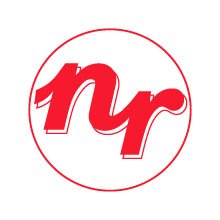What is Web 2.0? There are probably as many opinions and different answers about the term "Web 2.0" as there are questions, but a very good and widely acceptable explanation (better than the one I'm about to give) can be found here. My explanation will be slightly different since I'll be looking at the Web 2.0 phenomenon from a website design point of view.
Web 2.0, Generally...
The term "Web 2.0" often refers to the re-emergence of the Web after the dot com crash in the late 90s. During this period, the web businesses that didn't meet their demise when the dot com bubble burst were successful because they were beginning to incorporate new business models and design styles. These businesses started utilizing the Web as a platform, providing services (and not packaged software) that were platform independent, customizable, scalable, and more accessible. They also started utilizing another important development considered a Web 2.0 characteristic – the current design trend to separate website structure from website style. This, along with other design aspects of Web 2.0, is what I'm going to focus on during this discussion.
Separating Structure from Style
One of the main aspects of Web 2.0 is that it not only has to be useful for people, but it must be easily understandable and accessible for computers as well. Since many Web 2.0-style sites have dynamic, computer- and database-controlled content, website structure became much more important than website style. Because of this development, the practice of separating structure from style began. At present, many Web 2.0 sites have no (or very little) formatting and style information in their markup (that is, in the HTML file that web browsers read to display a webpage). All style and formatting information is now located in cascading style sheets (CSS) that are linked-in to the webpage. This not only makes the markup easier for computers to read and interface with, but it makes a website's style more versatile and easier to change. This current Web 2.0 practice has caused some other interesting design side-effects as well.
The Effects of Structure/Style Separation
Aside from making the Web more computer-friendly, Web 2.0 design principles have created a recent design school with a minimalist style. Websites are beginning to express more by saying less. They use large and bold graphics, bold text, and a fair amount of white space. They don't say anything more than what's needed and they provide a better user experience. Because of the simplicity of current designs and a refocusing of efforts toward a positive user experience, users can go to these sites and very quickly and easily access exactly what they are trying to find. And because the mantra of Web 2.0 is dynamism, new and constantly changing content keeps visitors coming back. Repeat visitors mean repeat business.
Web 2.0 design practices, when done correctly, also provide the user with a feeling of trust and confidence. The simplicity and elegance of a design combined with a website's ease of use projects a feeling of stability, consistency, and permanence to the user. With this level of comfort and confidence, a user is more likely to do business with a company that represents itself in such a professional manner – they don't mind handing their money over to a quality place that is so capably represented.
Should Your Site be "Web 2.0 Compatible?"
Technology changes very rapidly, so it's hard to see too far into the future, but at the moment, all signs point to Web 2.0 conventions and standards becoming the norm (they already have for most large-scale websites). Providing users with the information they're looking for, giving them control, and letting them use the Web on their terms is a trend that will (if it hasn't already) become a rule. Any person or company who ignores the Web 2.0 movement will probably be left behind the curve, losing business to those ahead of it.
